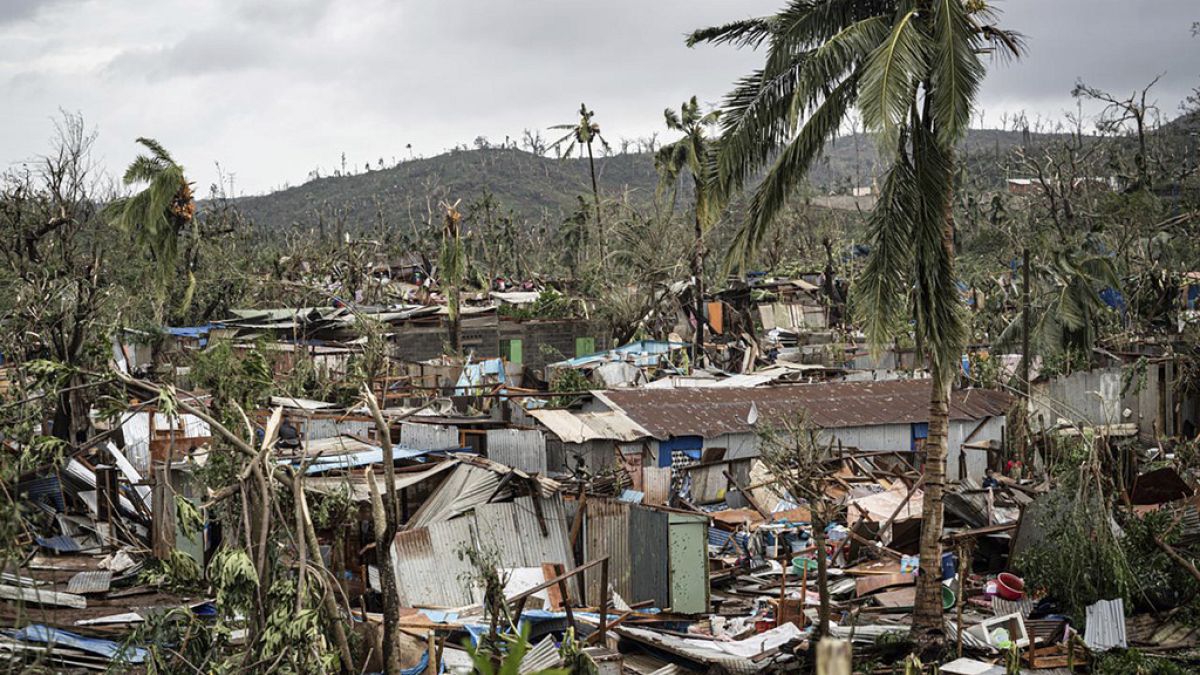When Cyclone Chido first hit Mayotte, few could foresee the destruction it would cause. The storm, described as “small but incredibly powerful”, tore down all kinds of critical infrastructure: homes, roads, transmission lines, water plants, and, crucially, the airport’s control tower.
The level of structural damage is unquantifiable, thousands of people are injured or missing, and the total death toll remains unknown — partly because communication both with and within the island is now almost impossible.
“The situation in Mayotte is extremely degraded,” said Baptiste Rivoire, National Operations Coordinator for Protection Civile. “People lack vital resources — water, food, even access to money.”
Rivoire is in charge of coordinating the on-the-ground response to the catastrophe, a task made difficult by the breakdown of flight routes between Mayotte, the mainland, and the other islands.
“I spoke yesterday with the President of the Department of Mayotte, who confirmed how serious the difficulties are. Communicating with people on the ground is incredibly challenging because the transmission network was fully destroyed.”
“It’s dangerous not just for the volunteers, but for all emergency responders—police officers, firefighters, and security personnel,” added Rivoire.
Impossible to coordinate
Mayotte’s 320,000 inhabitants have been left without water, electricity, and internet access. Electrical towers and trees were torn down, schools and hospitals badly damaged, and many roads are still blocked by debris.
Most of the island’s urban areas consisted of fragile shanty towns, and the storm destroyed almost all of them. Among the casualties is France’s biggest shanty town, Kaweni, which housed around 20,000 people — though only 5,000 of them have been registered at emergency shelters.
Despite the lack of resources, communication remains the most pressing issue for first-aid missions and responders.
“The operation is very complex to implement,” Rivoire said. “Volunteers need to be completely self-sufficient because we can’t rely on local resources. Every stage of the mission requires careful planning and takes significant time to put into place. This includes transporting volunteers, delivering supplies, and ensuring their safety.”
“To give you an idea, yesterday, the President of the AMF (Association des Maires de Mayotte) shared that, out of 15 telecommunications relay stations, 12 have been destroyed. This means most of the island is completely without network access. Outside Mamoudzou, mayors cannot communicate at all. It’s a total breakdown of infrastructure, and the destruction is just massive.”
He adds that the situation is psychologically hard for those on the ground.
“Some Civil Protection volunteers on site in Mayotte are deeply affected. They’re devastated by the scale of the destruction and are also anxious because they can’t communicate with their families. That uncertainty weighs heavily on them. It’s an unprecedented and exceptional crisis, and it makes emergency response efforts much more complex.”
Mayotte, alone
Another problem for volunteers is Mayotte’s geographical isolation. It’s already challenging to get to Réunion, and Mayotte is even further away.
Transport and communication issues add layers of complexity to coordinating aid and support, and complicate the task of bringing resources to the island.
“Water and food are the most critical,” Rivoire said. “Then comes health. Access to medical care is essential, but it’s extremely challenging.”
“Medical evacuations to Réunion are underway, but it takes time to organise them,” he explained. “A military field hospital has been set up in Mayotte, and we are deploying doctors, nurses, psychologists, and midwives to assist with the health crisis.”
“Transport is very restricted. Right now, only state-managed flights are operating, and they’re reserved for essential missions. Once commercial flights resume, we may see migration flows,” Rivoire pointed out.
Countless deaths
Beyond the structural damage, responders and volunteers are still dealing with the massive loss of human life.
France’s Home Office estimates an official number of 22 deaths, 45 missing, and 1,373 injured, but those figures are unrealistic given the size of the island’s population.
“Many injuries likely haven’t been reported yet,” Rivoire said. “Serious cases are being evacuated to Réunion, and less critical cases are treated at the military field hospital.”
As for the death toll, the lack of communication between the island’s areas makes it impossible to know how many victims there are in each community. Likewise, search and rescue efforts are proving slow due to damaged infrastructure.
Rivoire pointed to another factor that may be obscuring the picture: “Most of Mayotte’s population is Muslim. Their tradition requires burial within 24 hours, which makes counting the victims very difficult. Some burials may have already happened without official records.”

